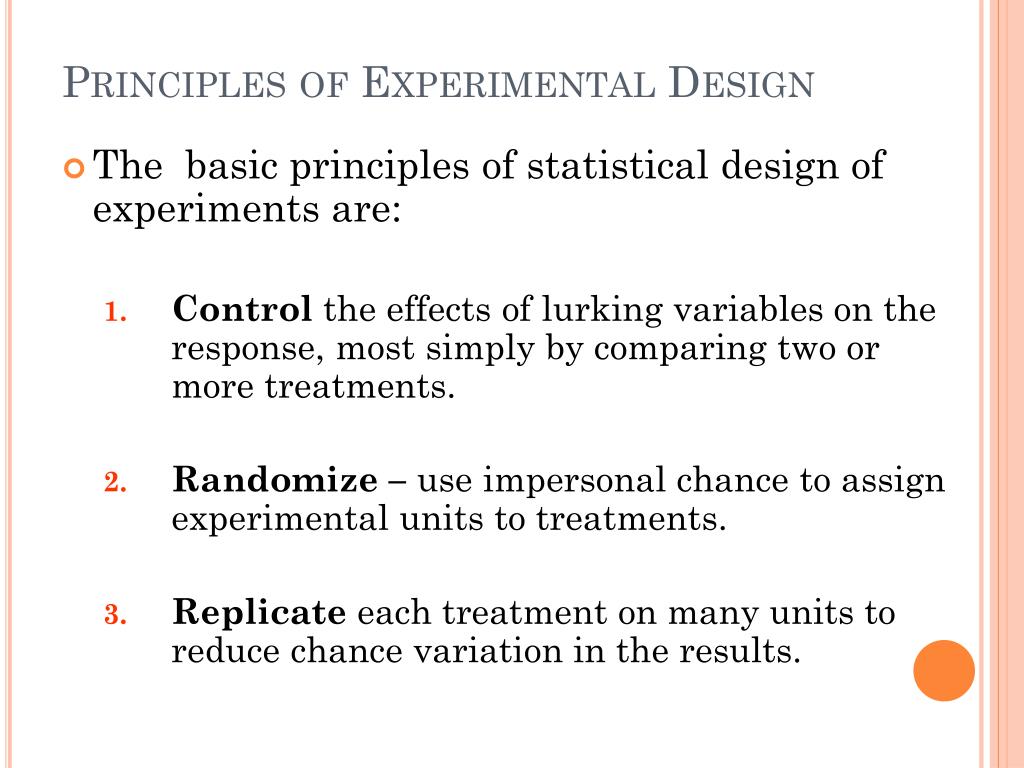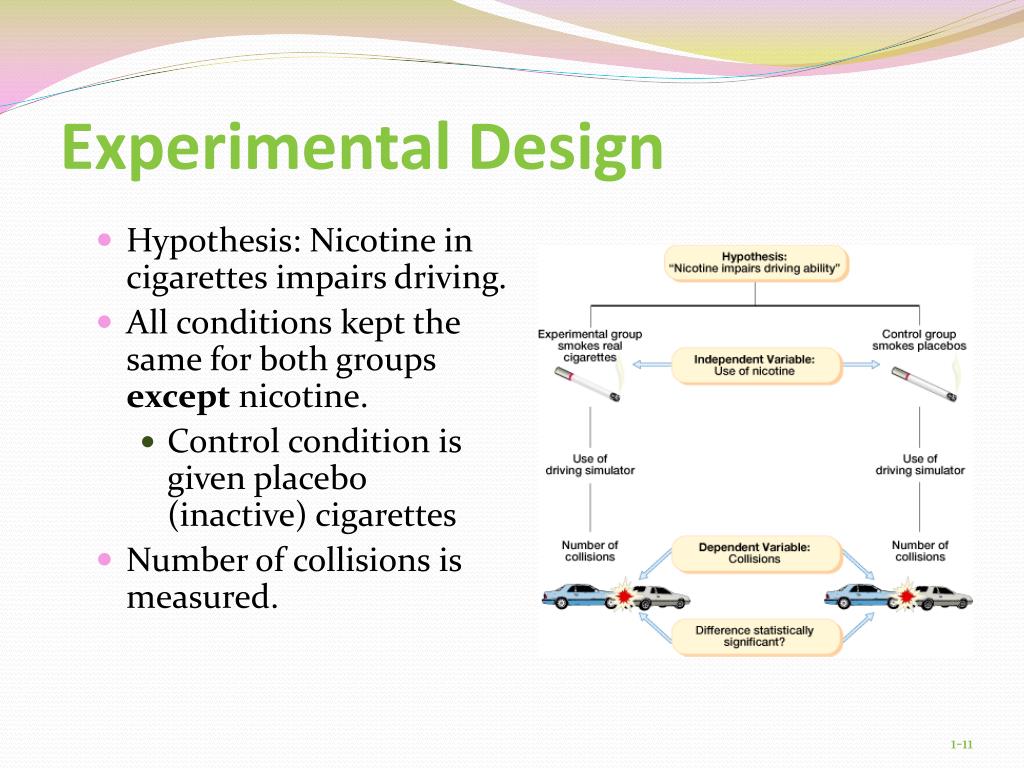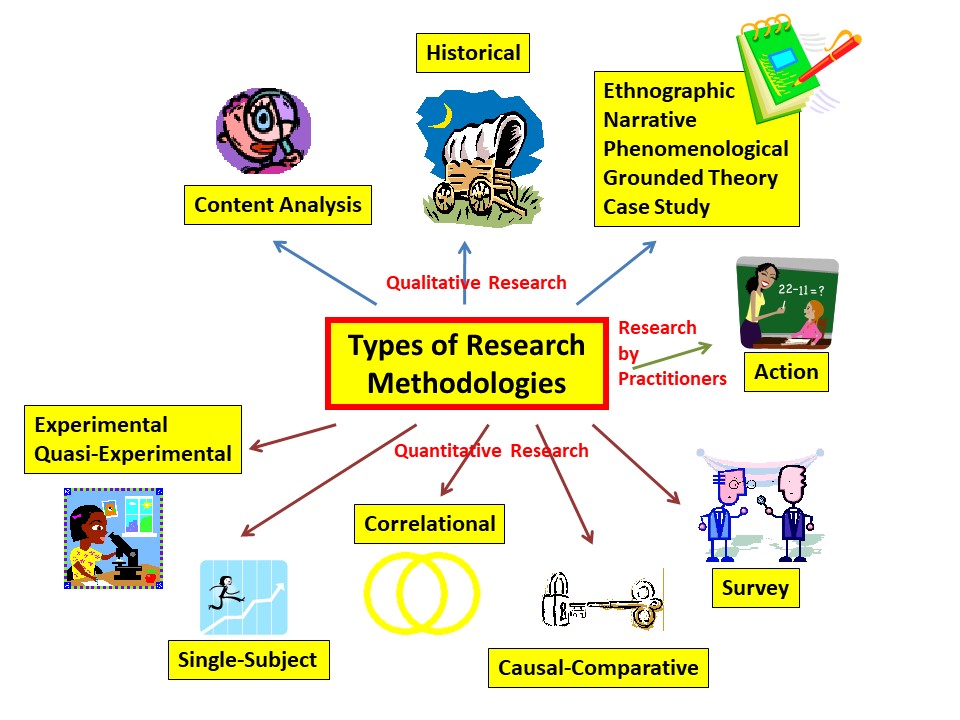Table Of Content

Similarly, in research, if you don't have a solid plan, you might get confusing or incorrect results. A good experimental design helps you ask the right questions (think critically), decide what to measure (come up with an idea), and figure out how to measure it (test it). It also helps you consider things that might mess up your results, like outside influences you hadn't thought of. In this article, we are going to discuss these different experimental designs for research with examples. Experimental designs are a set of procedures that you plan in order to examine the relationship between variables that interest you.
Sorry, you have been blocked
With computers, they can simulate complex experiments before they even start, which helps them predict what might happen. This is especially helpful in fields like medicine, where getting things right can be a matter of life and death. This is when people like Francis Galton, an English polymath, started to get really systematic about experimentation. His work helped create the foundations for a more organized approach to experiments.
Covariate Adaptive Randomization

An experiment is a method of data collection designed to test hypotheses under controlled conditions. In social scientific research, the term experiment has a precise meaning and should not be used to describe all research methodologies. Between-subjects experiments have the advantage of being conceptually simpler and requiring less testing time per participant.
Completely Randomised Design
So while complete counterbalancing of 6 conditions would require 720 orders, a Latin square would only require 6 orders. For example, suppose we wish to test the effects of a drug’s concentration in the range 0–100 ng/ml on the growth of cells. The cells will be grown with the drug in test tubes, arranged on a rack with four shelves. Our goal may be to determine whether the drug has an effect and precisely estimate the effect size or to identify the concentration at which the response is optimal.
These measures may be administered using specialized equipment or software. Experiments across all industries and research realms provide scientists, developers, and other researchers with definitive answers. These experiments can solve problems, create inventions, and heal illnesses.
Computer Science > Machine Learning
Almost every experiment can be conducted using either a between-subjects design or a within-subjects design. This possibility means that researchers must choose between the two approaches based on their relative merits for the particular situation. In a within-subjects experiment, each participant is tested under all conditions. Consider an experiment on the effect of a defendant’s physical attractiveness on judgments of his guilt.
When can a researcher conduct experimental research?
In the rapidly expanding digital space of 2018, fonts are having to do more and more things and more and more devices. With FS Industrie, Fontsmith set out to create a utilitarian typeface with its own unique character that works no matter your message or medium. They can provide the opportunity to break from the norm and pursue a creative path that's exciting, innovative and based on fresh ways of thinking. Not only that, they can supply some stand-out work for your design portfolio. This video introduces the need for randomization in all aspects of an experiment.

Their ability to continually update and refine hypotheses based on new evidence makes them particularly useful in fields where data is constantly evolving and where quick, informed decisions are crucial. Imagine you're a detective, and halfway through solving a case, you find a clue that changes everything. You wouldn't just stick to your old plan; you'd adapt and change your approach, right?
True Experimental Design
Develop a prediction about how the independent variable will affect the dependent variable. Although closely related to a true experiment, quasi-experimental research design differs in approach and scope. The research type you use will depend on the criteria of your experiment, your research budget, and environmental limitations. Basically, a researcher can conduct experimental research any time they want to test a theory with variable and dependent controls.
Since researchers aren't controlling variables, it's hard to rule out other explanations for what they observe. It's like hearing one side of a story—you get an idea of what happened, but it might not be the complete picture. The concept of Meta-Analysis started to take shape in the late 20th century, when computers became powerful enough to handle massive amounts of data.
A virtual reality experiment to study pedestrian perception of future street scenarios Scientific Reports - Nature.com
A virtual reality experiment to study pedestrian perception of future street scenarios Scientific Reports.
Posted: Sun, 25 Feb 2024 08:00:00 GMT [source]
Experimental research establishes a cause-effect relationship by testing a theory or hypothesis using experimental groups or control variables. In contrast, descriptive research describes a study or a topic by defining the variables under it and answering the questions related to the same. Experimental research design provides researchers with a controlled environment to conduct experiments that evaluate cause and effect.
Statistics deals with the study of gathering, observing, calculating, and interpreting numerical data. A statistical experiment is defined as an ordered procedure which is performed with the objective of verifying, and determining the validity of the hypothesis. Before performing any experiment, some specific questions for which the experiment is intended should be clearly identified. To minimise the variability effect on the result of interest, the experiment has to be designed.
Because this design produces a lot of data, and computers are the number crunchers that help make sense of it all. So, thanks to our silicon friends, researchers can study complicated questions like, "How do diet AND exercise together affect weight loss?" instead of looking at just one of those factors. Imagine juggling not just one, but multiple balls in the air—that's what researchers do in a factorial design. So there you have it—a quick tour through the history of experimental design, from Aristotle's deep thoughts to Fisher's groundbreaking ideas, and all the way to today's computer-powered research. These designs are the recipes that help people from all walks of life find answers to their big questions.
Conducting an Experiment in Psychology - Verywell Mind
Conducting an Experiment in Psychology.
Posted: Mon, 30 Oct 2023 07:00:00 GMT [source]
Born out of the early 20th-century work of statisticians like Ronald A. Fisher, this design is all about control, precision, and reliability. Skinner even built boxes—called Skinner Boxes—to test how animals like pigeons and rats learn. Watson performed a very controversial experiment called The Little Albert experiment that helped describe behaviour through conditioning—in other words, how people learn to behave the way they do. If you toss ingredients into a bowl without measuring, you'll end up with a mess instead of a tasty dessert. To compare the effectiveness of two different types of therapy for depression, depressed patients were assigned to receive either cognitive therapy or behavior therapy for a 12-week period.
In a between-subjects design, every participant experiences only one condition, and researchers assess group differences between participants in various conditions. In some cases, it may be immoral to withhold treatment completely from a control group within an experiment. If you recruited two groups of people with severe addiction and only provided treatment to one group, the other group would likely suffer. For these cases, researchers use a control group that receives “treatment as usual.” Experimenters must clearly define what treatment as usual means.
It's like the game plan in sports or the blueprint when you're building a house. Just like you wouldn't start building without a good blueprint, researchers won't start their studies without a strong experimental design. In this article, we'll take you on a journey through the world of experimental designs. We'll talk about the different types, or "flavors," of experimental designs, where they're used, and even give you a peek into how they came to be.

No comments:
Post a Comment